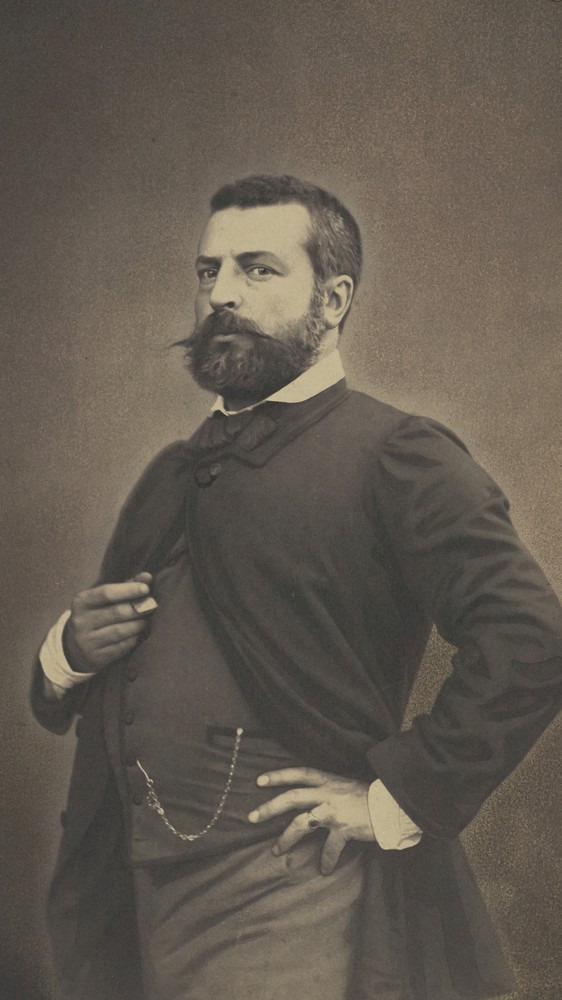Gaspard-Félix Tournachon, also known as Nadar, was a kind of Renaissance man. He orchestrated the world’s first aerial photograph, inspired Jules Verne’s Five Weeks in a Balloon (and a character in From the Earth to the Moon), was the first to use artificial lighting in photography, invented crowd control barriers (still known today as “Nadar barriers”), organized the world’s first airmail service, hosted the Impressionists’ first exhibit, and predicted that airplanes would take the place of hot air balloons. But many of his “extracurricular activities” were underwritten by his life’s true practice: portraits. He took the likeness of the who’s who of his day—actors and artists and writers and politicians—with simplistic compositions that ran against the trend of ornate, contrived decoration.
These photographs were taken using a wide array of techniques, from salted paper prints, “Woodburytypes,” albumen silver prints, gelatin silver prints, and more. Nadar’s time was one of great technological innovation and experimentation—a pulse he always had his finger on.





















